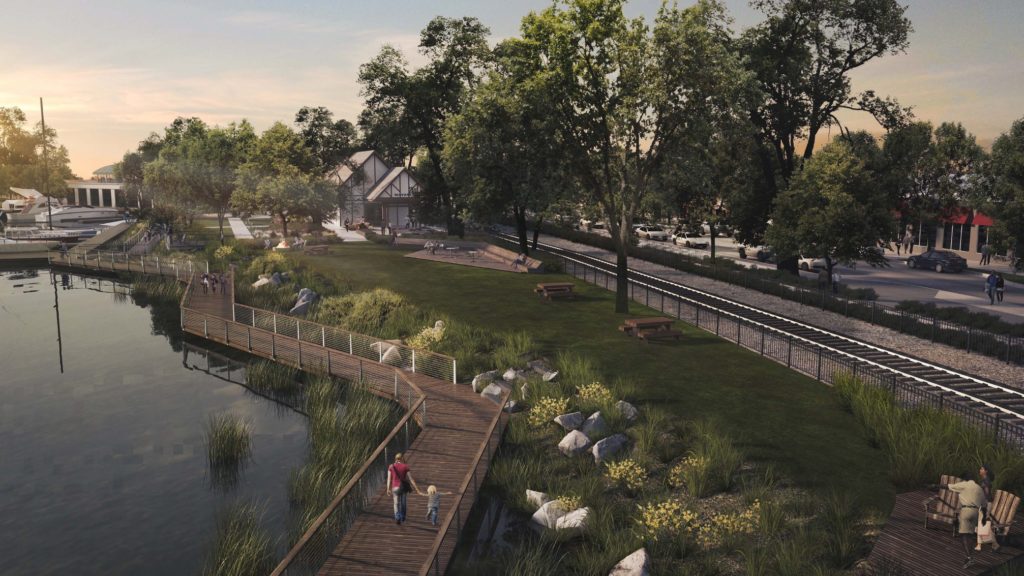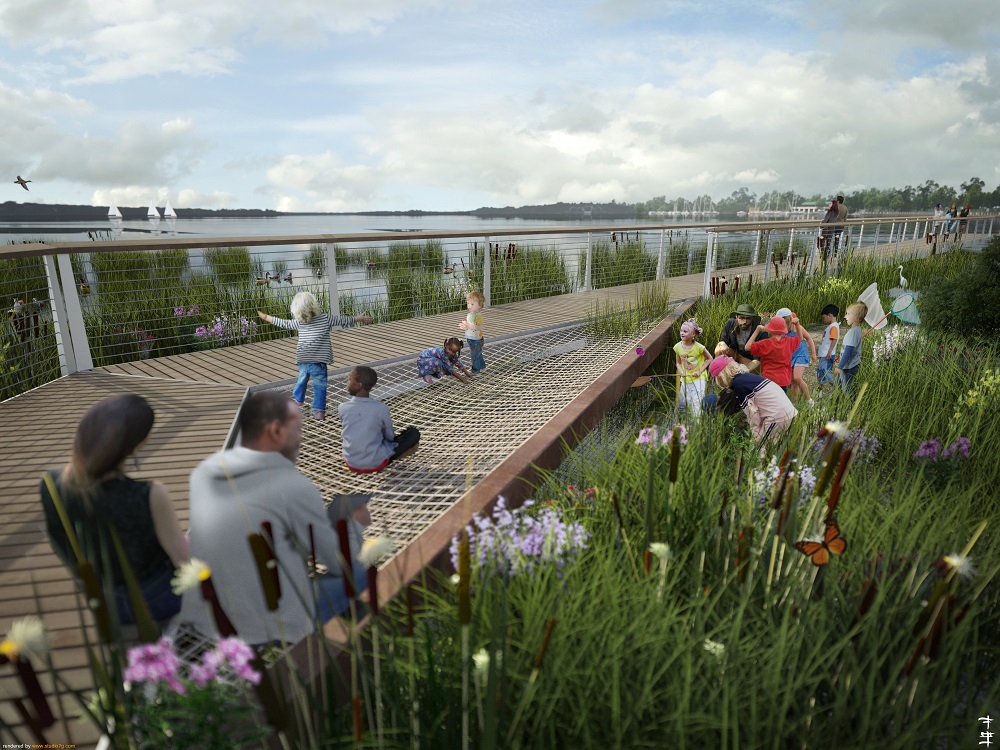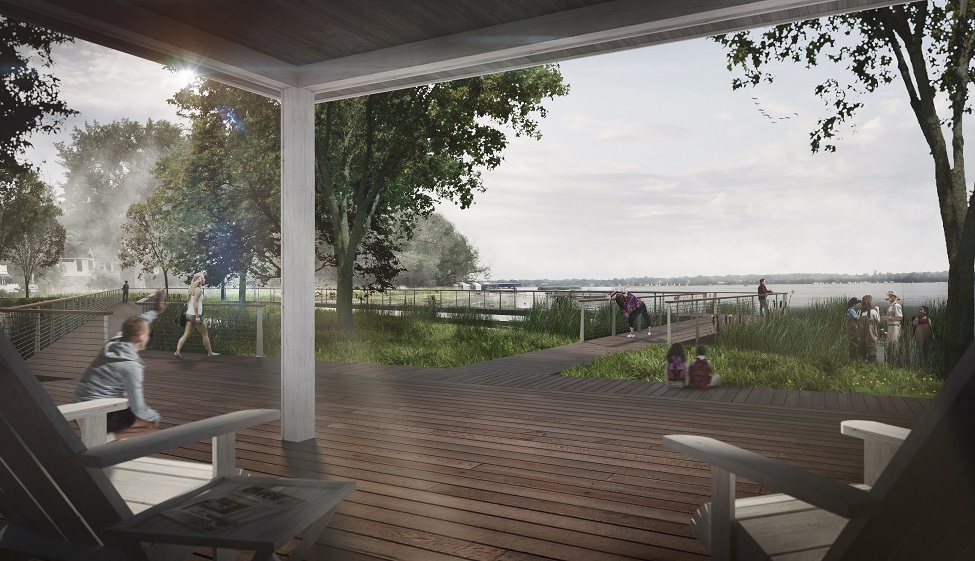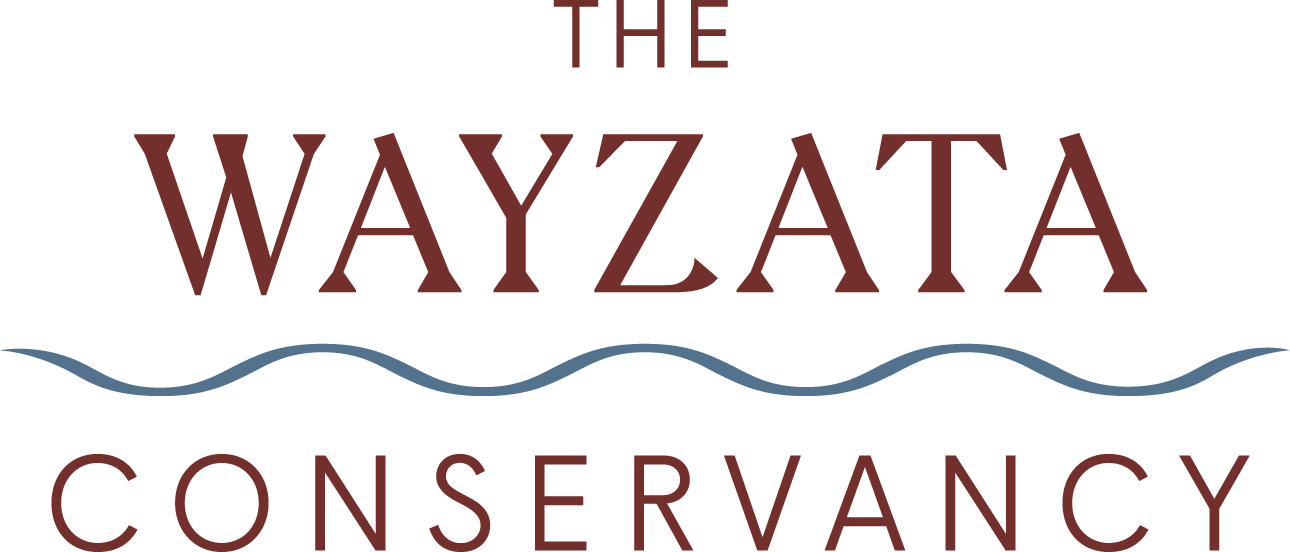Overview
Wayzata’s shoreline offers a unique connection to nature that few other cities can claim. For more than 150 years, the waterfront has drawn many to work and live near its beauty. Unfortunately, the growth and popularity of the lake has come at a cost. Flourishing residential, business, and recreational communities have impacted water quality, plant and animal life. With invasive species and climate change, we now face an unprecedented threat to the overall health and well-being of Lake Minnetonka. It is imperative to keep the lake healthy and heal what has been damaged. Restoring lake-dwelling animal and plant communities and upland buffers contributes to a healthy lake ecosystem.
Lake Minnetonka desperately needs more areas with native vegetation where turtles, frogs, toads, birds, dragonflies, damselflies, butterflies and pollinating insects can thrive at the water’s edge and serve as the base of the food chain. This also aids the lake fishery, providing nursery and escape cover from bass and northern pike. Predators, such as otter, mink, weasel, great blue heron, great egret, and green heron depend on the lake food chain. Other species use the lake and uplands to complete their life cycle–western painted turtle, softshell turtle, snapping turtle–all dig their nests in uplands but spend most of their lives in the lake. Songbirds ring the lakeshore where vegetation exists: song sparrow, yellowthroat, yellow warbler, warbling vireo, to name a few. In migration yellow-rumped warbler hawk over the water from perches on the shore.
Pollutants come into the lake from pavement, rooftops, lawns, and construction sites. Rain washes sediment carries phosphorus–a major driver of algae blooms–and other pollutants–nitrogen, salt, and oil.

Major environmental improvements of the Panoway project:
Read Lake Minnetonka Magazine article – Stewards of the Lake
Panoway on Wayzata Bay will restore, protect and enhance Wayzata’s downtown lakefront while also addressing infrastructure needs for the city and enhancing the connection between downtown Wayzata and the lakefront. This multi-phase public-private initiative will make sure Lake Minnetonka will remain a treasured asset for generations to come. Environmental and lake ecology improvements include:
1 – Streetside (completed in 2020)
- Reduction of surface water runoff by creating rain gardens, tree trenches, permeable pavers along the 7 blocks of refurbished streetscape.
- Conversion of over 1 acre of concrete to vegetated open space. Added trees, perennial plants, and pollinator habitat.
- Treatment and redirection of stormwater runoff and connections that once dumped pollution directly into the lake, for re-use in irrigation and as a potable water supply for the fountain and splash pad.

2 – Lakeside (planned)
- Shoreline restoration
- Addition of native vegetation, pollinator habitat, and restored upland buffer along the lake edge where, in many places, the lake edge is rock, gravel, or turf.
- Plantings will include prairie, savanna, wet meadow, and a marsh fringe
- Lakeshore Marsh
- Creation of an lakeshore marsh and eco–park for learning
- Both supported by an offshore underwater reef that reduces wave action from boats and storms, dissipating wave energy and allowing sediment to drop out and bulrush and white water-lily to grow where they otherwise struggle to persist today. This will foster the growth of native plants behind the sheltering reef to compete with the invasive Eurasian water millfoil. As an experiment, the reef and native planting will give us insights into how to restore lakeshore marshes elsewhere on Lake Minnetonka. The reef will also serve as a natural bubbler protecting the boardwalk from ice flows in the winter.
- Upgrade the stormwater detention basins along the lake edge improving pollution removal while restoring a species-rich marsh habitat for wildlife and pollinating insects.
- Addition of native vegetation, pollinator habitat, and restored upland buffer along the lake edge where, in many places, the lake edge is rock, gravel, or turf.

3 – Lakeshore Learning Center (planned)
Panoway will also provide an inspirational and rare opportunity for hands-on education for kids, including indoor and outdoor learning environments with the creation of an Eco Park. This new public space surrounding the historic Section Foreman house will restore lakeshore marsh and the shoreline and improve water quality. The park includes a pier extension of the boardwalk and opportunities to create “Living Eco-Classrooms” along the lakeshore for STEM based learning. Educational elements include:
- Partnering with schools, camps, and other organizations, giving youth access to the lake as a unique “living classroom” (Partners include – YMCA, Wayzata Sailing, Science Museum, Wayzata Public Schools, IOCP)
- Developing an accredited STEM (Science, Technology, Engineering, and Math) curriculum that will increase students’ readiness for college and careers.
- Engaging youth in learning about ecology, biology, and the vital role the lakes play in the economy and quality of life of Minnesota
- Creating a Lakeshore Learning Center, a space to learn about the history of the region in the renovated Section Foreman House. In recent years, the WC has collaborated with the Lake Minnetonka Science Collaborative working with Wayzata Public schools and the YMCA and Science Museum on a pilot program: Lake Exploration Camp for elementary and middle school students. For many of the young people who participated, it was their first experience being on the lake. They learned about water quality issues, invasive species, and wildlife habitats. They also completed a service project clearing storm drains in downtown Wayzata and near Dutch Lake.

Summary
Panoway on Wayzata Bay is taking the steps needed to improve the Lake Minnetonka ecosystem. The project will restore the shoreline to a more natural condition and address critical environmental needs for habitat creation, wildlife support, and pollution-reduction.
The completed street-side projects already have made significant environmental progress, including efforts to reduce pollution from surface water runoff.
Future phases will take the project to the next level–installing natural methods to treat and clean water before it reaches the lake while restoring important missing habitat along the lakeshore. Wayzata is poised to become a leader, implementing clean water and sustainability practices, achieving a level of environmental achievement well above what a community of its size accomplishes.
Environmental improvements include:
- Reintroducing and supporting native plant life and habitat for wildlife
- Planting hundreds of new trees and live native herbaceous plants
- Introducing more than 5,000 square feet of new pollinator habitat
- Restoring more than 1,000 linear feet of lake edge
- Installing stormwater BMPs to improve and treat rainwater runoff
- Developing up-to-date irrigation technology to reduce water consumption
- Converting 12,000 square feet of paving along Lake Street back to a natural state.
These changes will not only improve water quality, they will also increase the resilience of the environment and raise its capacity to absorb and adapt to shifts in climate and severe weather events.
Please support this effort by pledging your financial support.

